All products featured are independently chosen by us. However, SoundGuys may receive a commission on orders placed through its retail links. See our ethics statement.
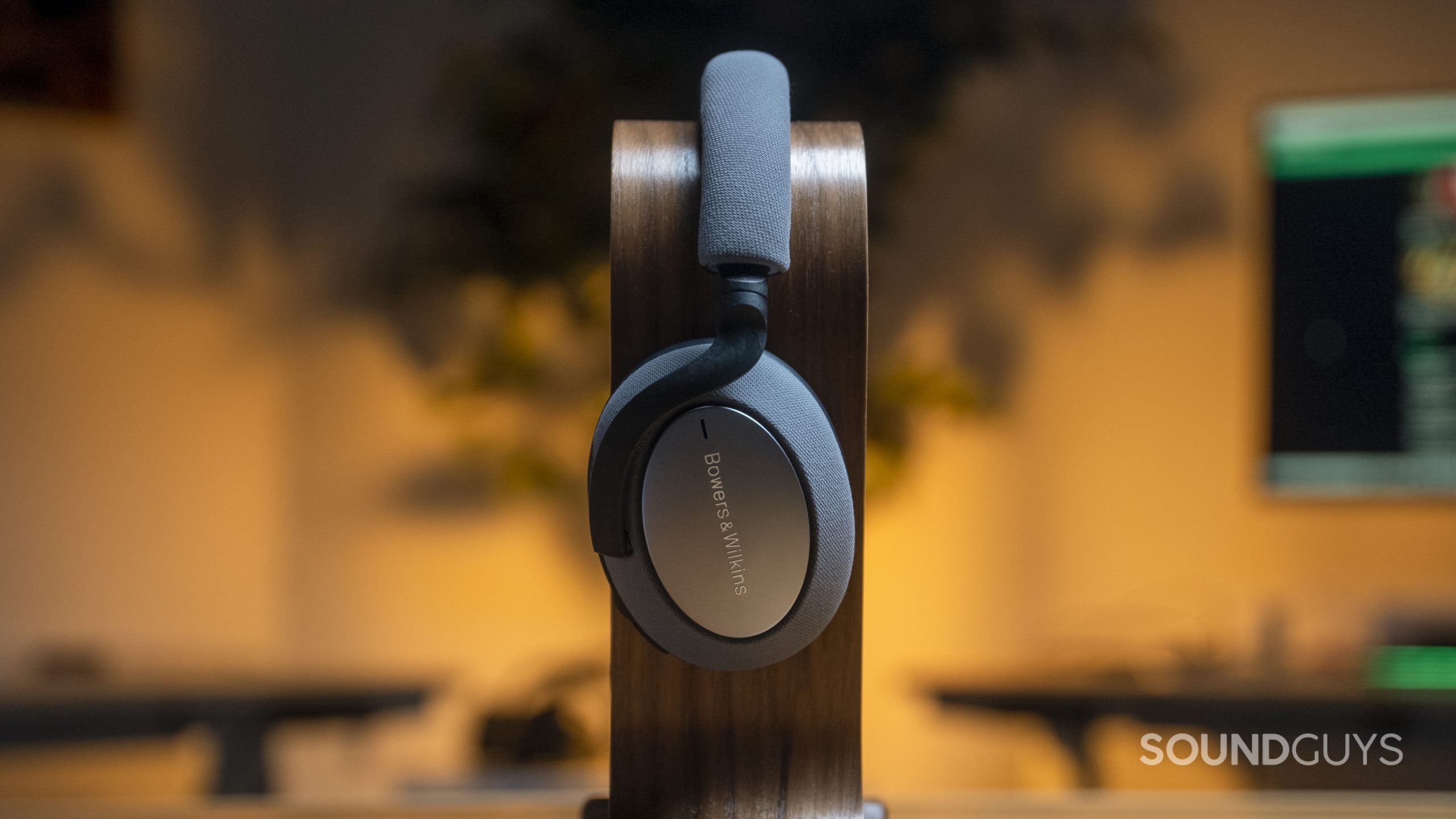
Bowers & Wilkins PX7 review
September 10, 2024
Bowers & Wilkins PX7
Among the luxury brands of headphones out there, Bowers & Wilkins has made a name for itself in the past with stellar options like the P7 and P9 Signature. However, its wireless options have left a little to be desired as of late. Is the Bowers & Wilkins PX7 the pair of headphones to right the course? We spent two weeks with the PX7 and the answer, as usual, is: it’s complicated.
Editor’s note: This article was updated on September 10, 2024, to add a comparison to the newer PX7 S2e headphones.
Deep-pocketed travelers and commuters will appreciate the active noise canceling (ANC) performance of the Bowers & Wilkins PX7. If you wear glasses, however, the high clamping force of the band will not be comfortable for you.
What’s it like to use the Bowers & Wilkins PX7?
Like the AirPods Max, the Bowers & Wilkins PX7 is one of a number of active noise canceling headphones aimed at the more affluent consumer who wants a more fashionable look than the one offered by the more common ANC headsets. The backs of the ear cups are clad in a matte fabric and plastic treated to look like unpolished metal, which is a welcome departure from the rather soulless black and nondescript competing models’ aesthetics. Each ear cup rotates up to 180 degrees where the C-shaped yoke meets the band, the latter of which is clad in the same fabric as the ear cups (but with a leather underside where it rests on your head).
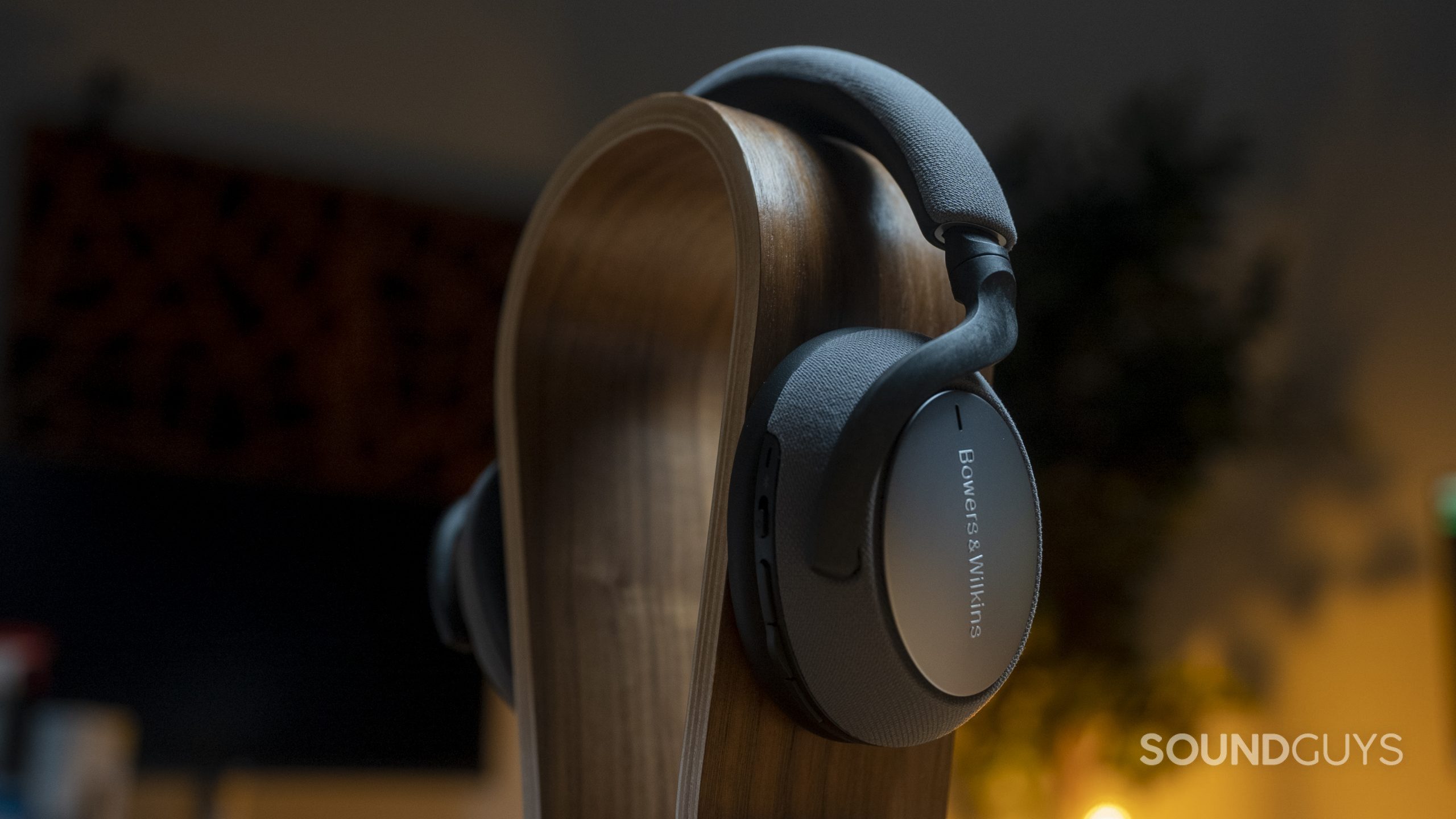
Because the band has a lot of rigidity, the headphones themselves have a lot of clamping force when fit properly, which can be uncomfortable if you wear glasses or have a large head. However, that does also mean that the Bowers & Wilkins PX7 is very unlikely to move around on your head, even if they get jostled a bit trying to catch the bus or train. Be sure to adjust your fit accordingly if you find it to be even a little uncomfortable because the higher-than-usual friction within the band holds the headphones in position extremely well-meaning discomfort compounds over time, rather than lessens, as the band expands from the force your head applies to it.
Once on your head, the Bowers & Wilkins PX7 is relatively straightforward to use: like most ANC headphones, the controls are clustered on the back of the ear cups by way of three buttons on the right side, a power/pairing switch, and an ANC toggle on the left. If you’ve ever used ANC headphones before, you shouldn’t get lost with this control schema, as it’s very similar to other options on the market from other manufacturers.
Included with the Bowers & Wilkins PX7 is a fabric-coated hardshell case that contains a 3.5mm cable, type A to type C USB cable for charging, and a sewn-in pouch to store the aforementioned.
How do you control the Bowers & Wilkins PX7?
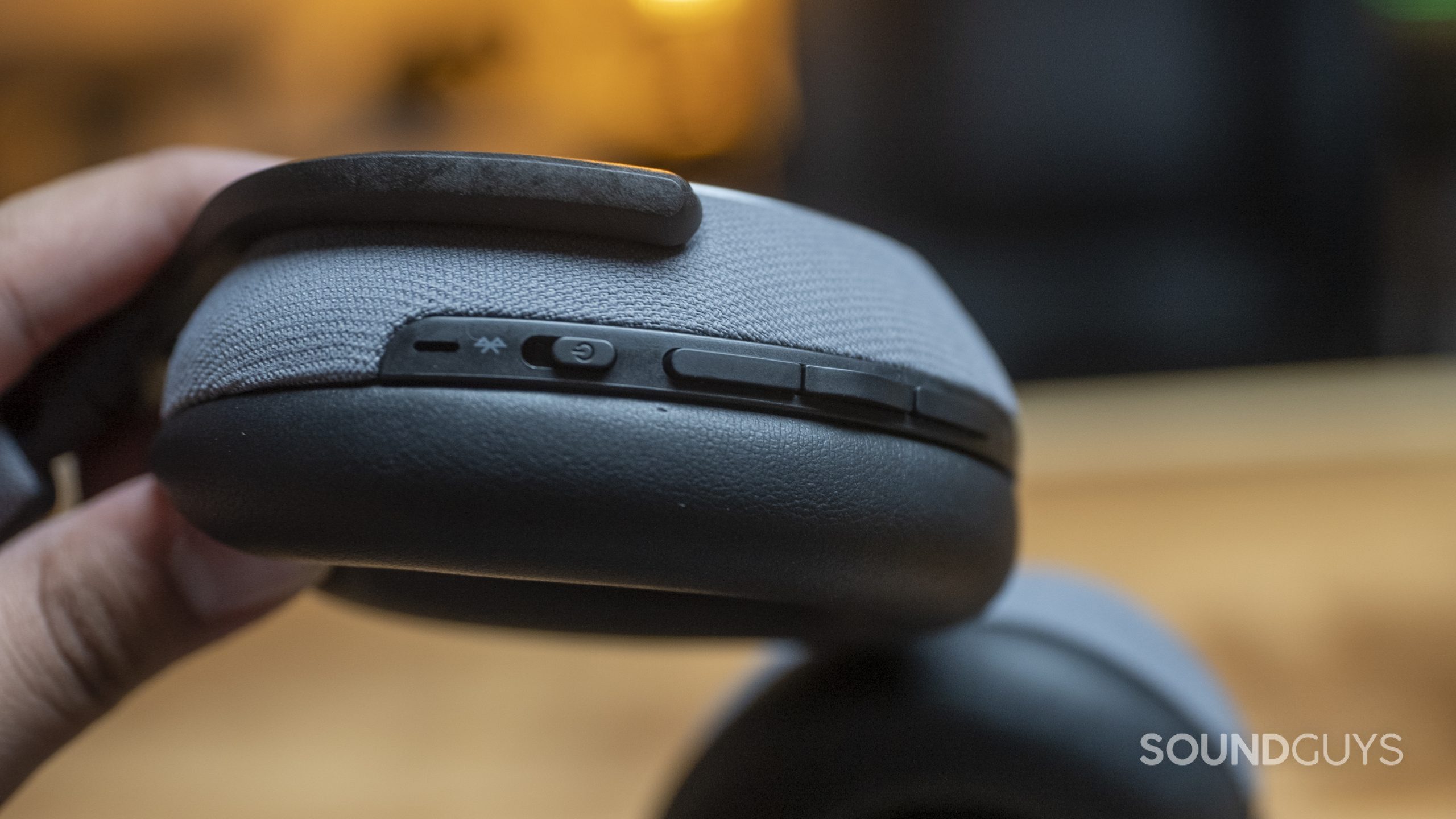
There are several buttons on the back of the Bowers & Wilkins PX7 that have various functions. However, be aware that there’s a short latency period between presses, and you can sometimes outpace the presses if you’re impatient. For example, if you triple-tap the multi-function button too quickly, it will only register as one or two taps, accomplishing the opposite of what you set out to do.
| Single press | Double press | Triple Press | Hold | |
|---|---|---|---|---|
ANC button (left) | Single pressDouble pressTriple Press Mode toggle | Hold Transparency mode | ||
Volume button up | Single pressDouble pressTriple PressHold Volume up | |||
Multifunction | Single press Pause / answer call | Double press Track forward | Triple Press Previous track | Hold N/A |
Volume button down | Single pressDouble pressTriple PressHold Volume down | |||
Should you download the Bowers & Wilkins Headphones app?
To stay updated, you should absolutely download the Bowers & Wilkins Headphones app (iOS/Android). While the app is limited in utility without an equalizer or other more popular features, being able to adjust the ANC strength and receive firmware updates is reason enough to keep it on your phone.
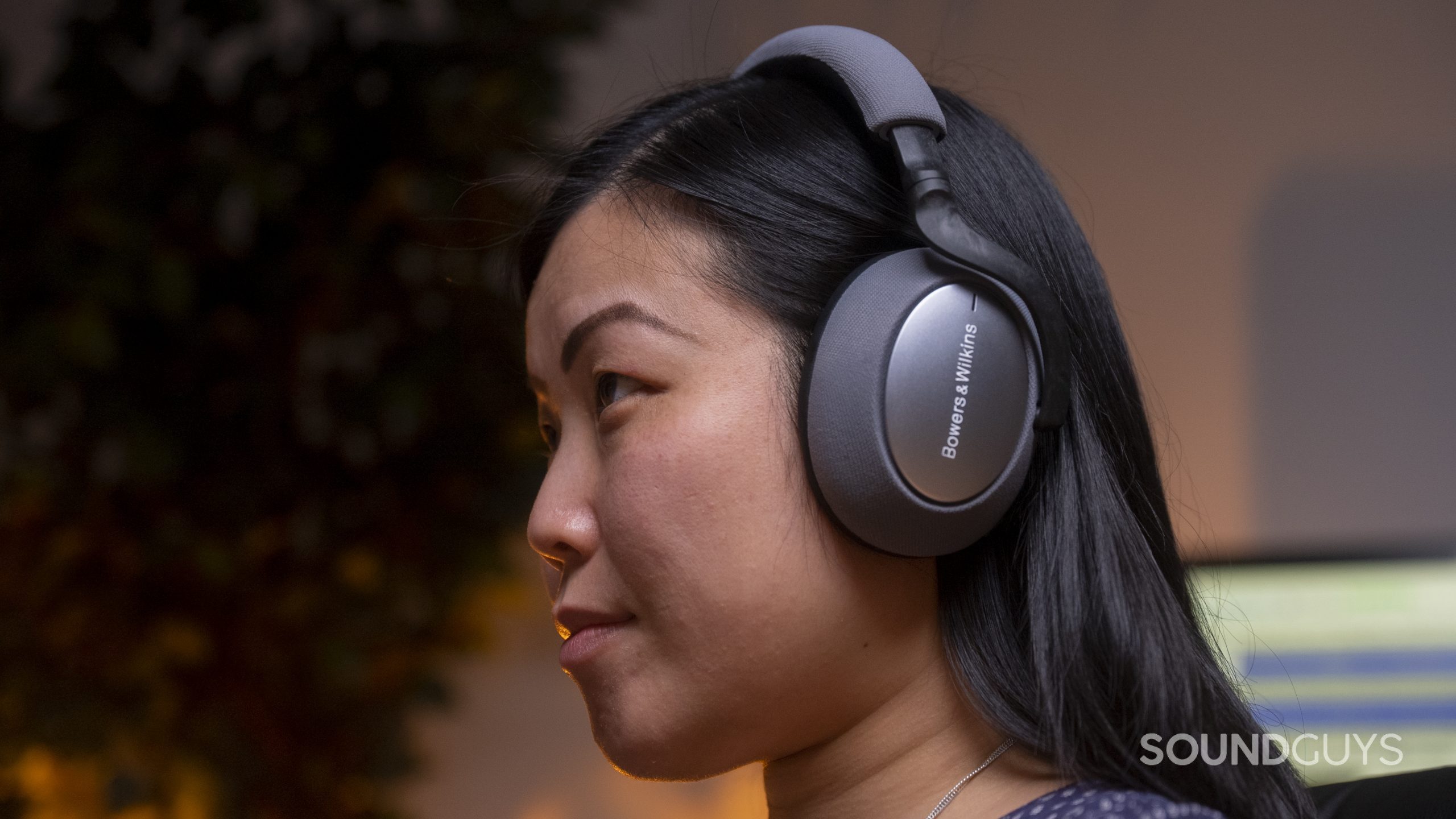
You can also control certain functions of the headphones from the Bowers & Wilkins Headphones app. You can adjust the ANC levels, wear sensors, voice prompts, and software updates, and even listen to pre-recorded “soundscapes” meant to offer a nice break from the world if you’re trying to sleep on a noisy flight. Additionally, the app allows you to do things like change the name of your headphones, adjust ambient sound passthrough levels, and manage stored connections. It’s a useful app, though it’s missing the most important feature an app can have: the EQ.
How do you connect to the Bowers & Wilkins PX7?
As far as connections go, the Bowers & Wilkins PX7 is one of the more versatile ANC headphones on the market. Boasting the extremely rare USB-C connection for audio (not just for power), Bowers & Wilkins seems to be hoping its ease of use can meet the needs of more listeners than its competitors. Additionally, the headphones offer a 3.5mm connection and a wide range of Bluetooth codecs.
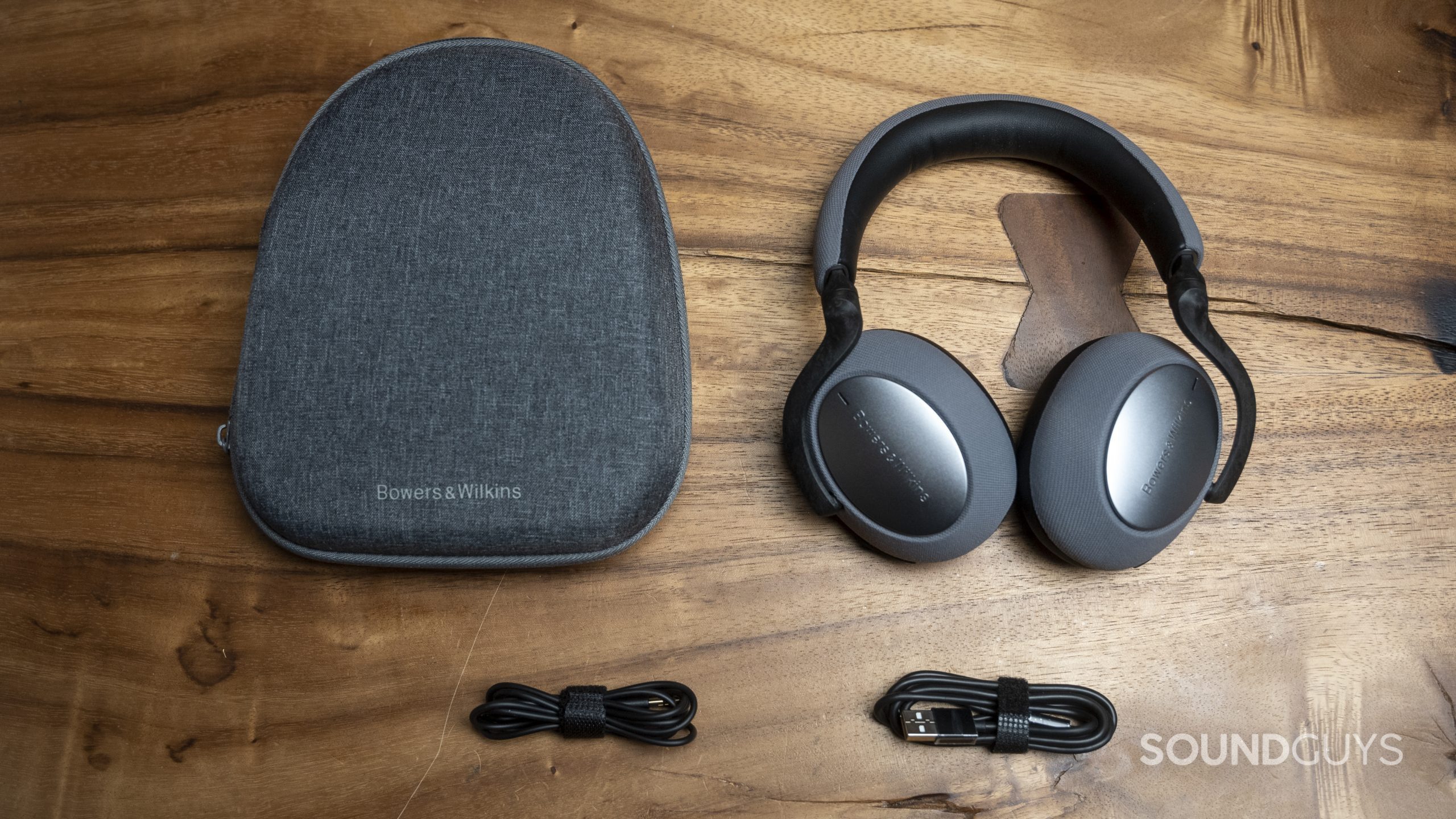
If you’re going to be listening wirelessly, push the slider on the back of the right ear cup up and hold it there until the blue light starts flashing. Once it does, you’ll be in pairing mode, and you can then pair your phone to the Bowers & Wilkins PX7. When you’re ready to turn the headphones off, just knock the slider to its lowest position.
| Port/protocol | |
|---|---|
Bluetooth codecs | aptX Adaptive, aptX HD, aptX, AAC, SBC |
Digital connection | USB-C audio |
Analog connection | 3.5mm audio interface |
Power connection | USB-C |
Of course, if you have an Apple device, you’ll be limited to connecting via SBC or AAC, but that’s hardly a knock against the headphones in that specific case. In general, Apple phones don’t vary as much as older Android phones do when it comes to the codec, so everything should be groovy if you’re locked into that ecosystem.
One of the more interesting items here is that the Bowers & Wilkins PX7 is one of few headphones with aptX Adaptive baked-in. In our time with the headphones, we had better sound quality results forcing aptX HD, but Apple users will be unable to do this. If you’re an Android user, enable “Developer options” on your phone, then scroll to “Bluetooth audio codec” to pick your desired connection type. It’s entirely possible that your phone doesn’t support one or the other, depending on how old it is, but it’s not really much cause for concern.
How good is the battery life of the Bowers & Wilkins PX7?
With our standard protocol, the Bowers & Wilkins PX7 lasted 32 hours and 53 minutes. Among noise canceling headphones, this is an excellent result and should last you through any intercontinental flight without a need for a recharge. This result was achieved with the ANC on, so if you turn this feature off or if you adjust your volume to extremes—your mileage may vary. Still, you can always fall back on a 15-minute quick charge for a very respectable 5 hours of playback.
How well does the Bowers & Wilkins PX7 cancel noise?
An excellent set of noise cancellers, the Bowers & Wilkins PX7 does a very commendable job disrupting low-end noise with its active noise cancelation while also isolating very well. However, please note that this all depends on a good seal, which can be difficult depending on the size of your head and ears. While I don’t exactly have open cab doors on the side of my head, the pads don’t allow me enough room between my pinna and skull—meaning my glasses compromise the seal. If you’re like me and have thicker frames, it’s possible these headphones won’t isolate as well as they appear on this chart.
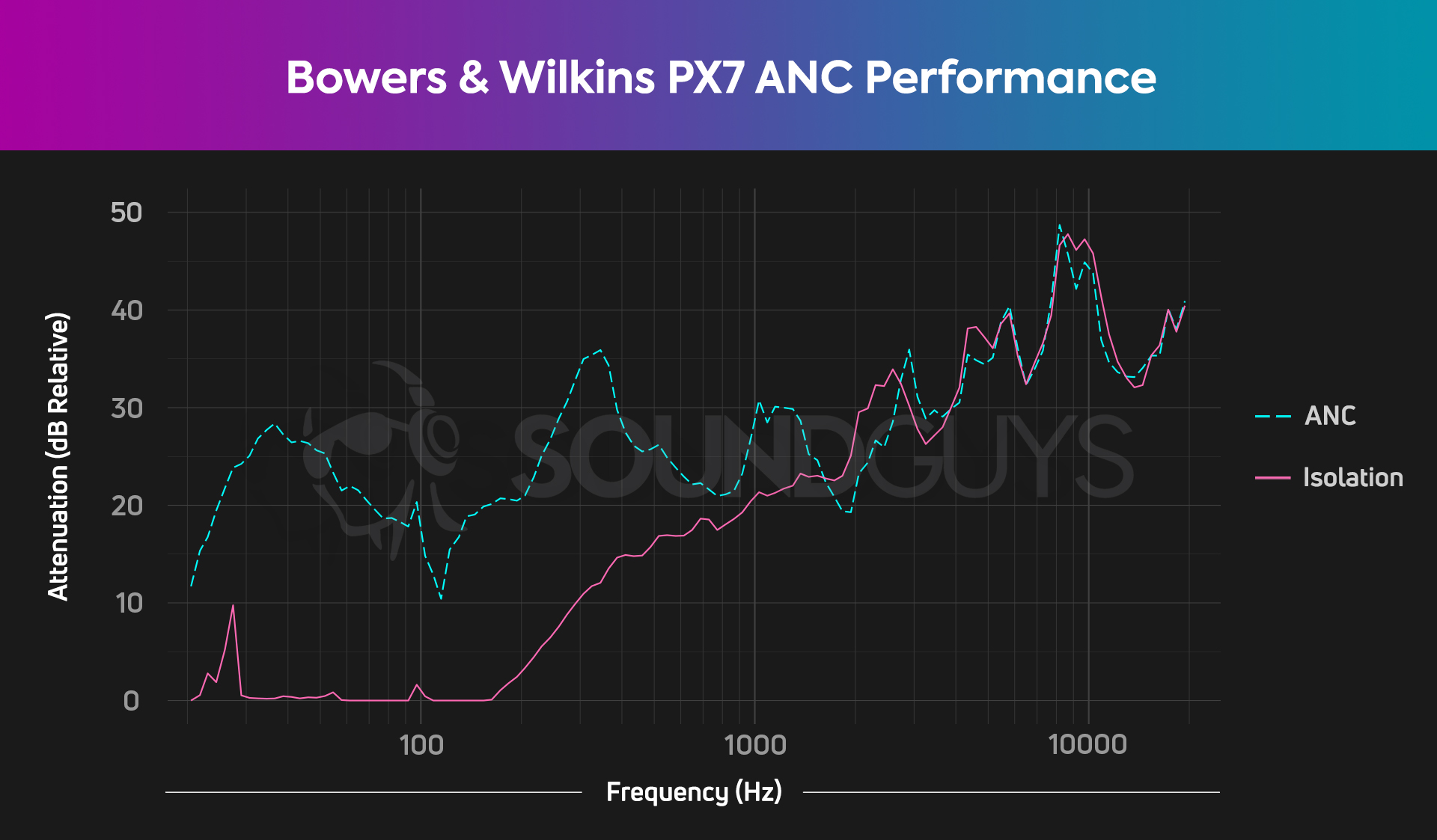
If you’re lucky enough not to wear glasses, the PX7 is exactly the set of ANC headphones that will perform well on a flight or subway ride. Relatively high clamping force paired with soft padding means that the Bowers & Wilkins PX7 can make an excellent seal to your skull—which explains why the isolation (pink line above) is so high. Even before the ANC unit has to work to destroy noise, the headphones can attenuate everything above 1kHz by 75% to 93.75% in loudness. That’s pretty impressive when you consider that the ANC unit also hushes low-end noise as well as it does.
What does the Bowers & Wilkins PX7 sound like?
In short, the Bowers & Wilkins PX7 does not sound as good as it should for the price tag it carries, but it’s possible some of the swings or the bass overemphasis could be mitigated with a software update (though it hasn’t happened yet). Until then, though, this is a poor showing any way you slice it.
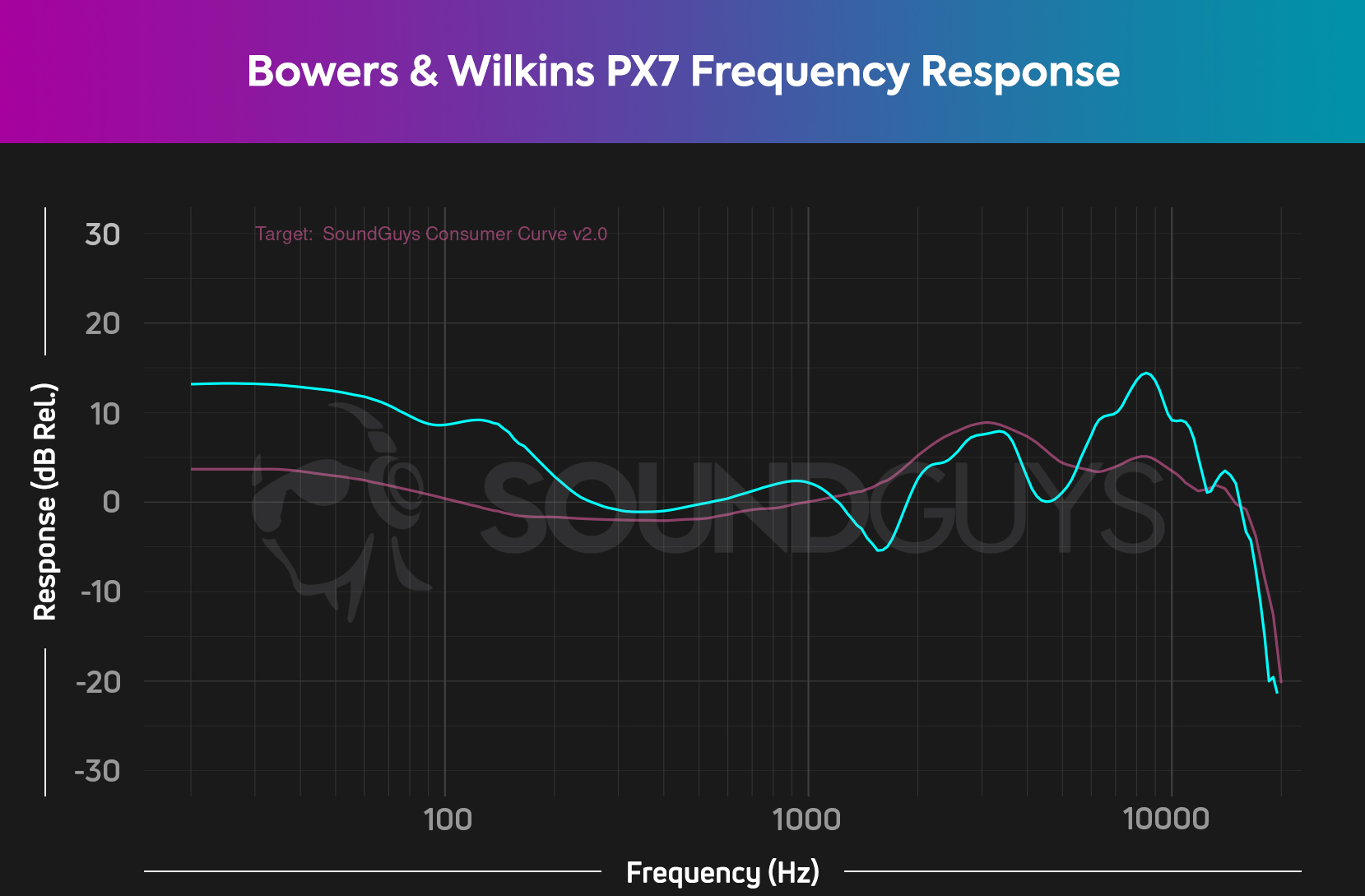
Out of the box, the Bowers & Wilkins PX7 is extremely bassy and has rather odd areas of under-emphasis, leading to bizarre-sounding music. Bass emphasis is pretty consistently 10dB higher than it should be, making the sub-bass and bass twice as loud as they would on headphones that follow the SoundGuys headphone preference curve. Additionally, that peak between 6-9kHz does a decent job of making highs stand out in the cacophony of modern pop mixes, but it can make those sounds, especially grating at times.
Lows, mids, and highs
The fewer instruments that compete for attention in your song, the better it will sound. For example, punk, rock, and anything that has significant distortion on guitars sounds awful. PUP’s newest album is a great example of this, especially the track Totally Fine. All the instruments get lost in each other into a wall of noise that just isn’t very fun to listen to. Passing these headphones around the office, multiple listeners noted overpowering bass, lack of clarity, and even some artifacts in cymbals among tracks in this year’s Grammy-winning Silk Sonic album.
It’s tough to pin down if this is a codec issue or whether or if the headphones really are just tuned oddly. I say that because the increased bandwidth of aptX HD solves a lot of the intermittent noise issues heard when listening with aptX Adaptive and SBC, though the frequency response does not appear to change. I get the feeling that some of the tuning is designed to help the ANC unit drown out the odd noises that do get through to your ears, but if that’s the case, it’s gross overkill to the point of detriment.
Because these swings are so wild (and these aren’t generally used with a wired connection), you’re going to have one heck of a time managing your preamp settings in a way that won’t lead to clipping in some of the more popular headphone EQ apps.
To prevent clipping and wonkiness, you’ll have to manually limit the depth of the cuts, leading to a still-too-bassy sound with occasional artifacts near 9kHz. You may have more luck playing around than we did, but that peak in the highs is really difficult to manage with those dips at 1300Hz and 4-5kHz.
How good is the Bowers & Wilkins PX7’s microphone array?
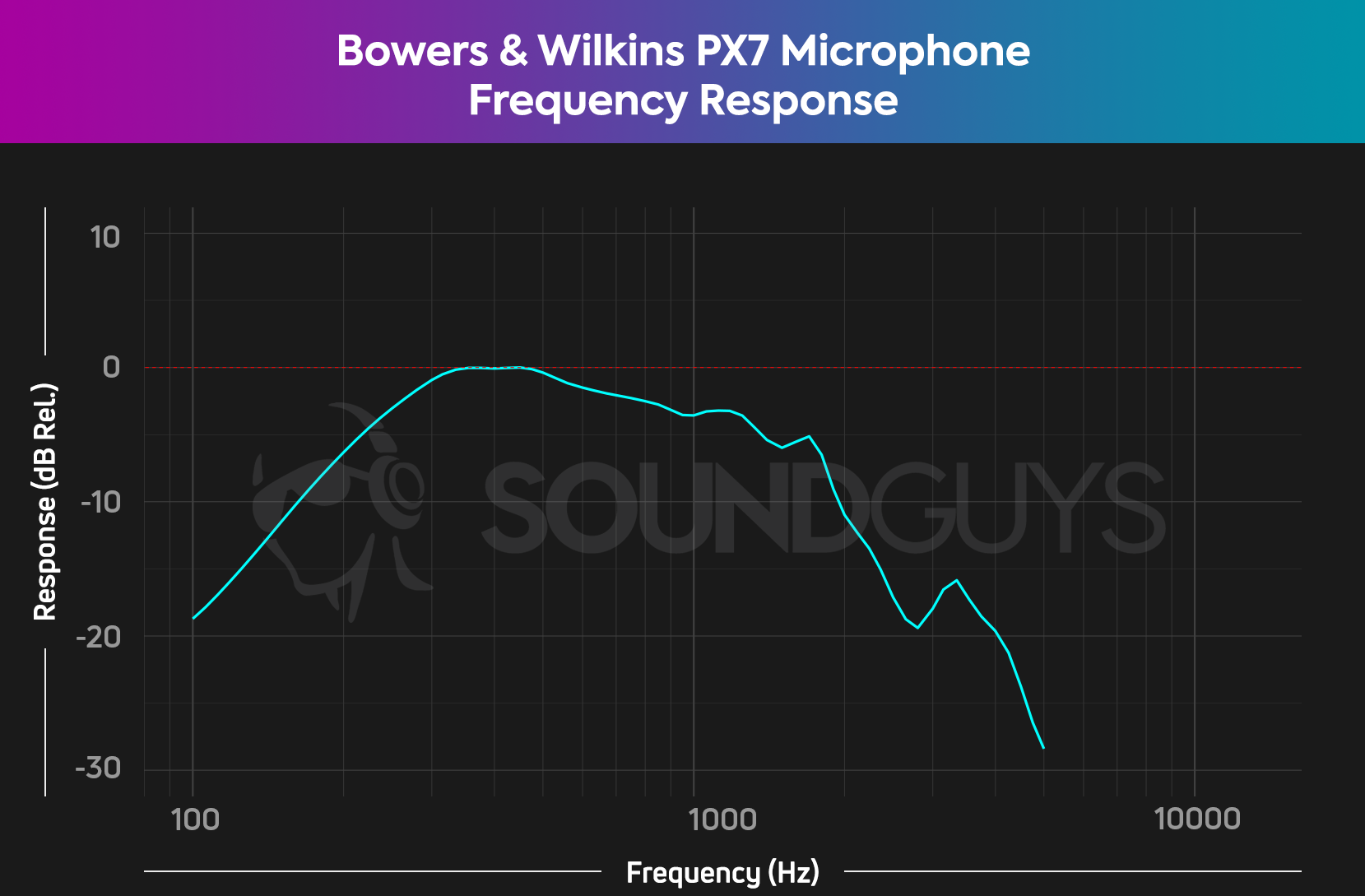
The microphone isn’t amazing and doesn’t do a great job of rejecting noise. It should work perfectly fine for most calls, but it’s a bit muffled for anything requiring better call quality, like an interview or appearance on a podcast. Give the standardized samples below a listen, and let us know what you think about the speech quality.
Bowers & Wilkins PX7 microphone demo (Ideal):
Bowers & Wilkins PX7 microphone demo (Street):
Bowers & Wilkins PX7 microphone demo (Wind):
How does the microphone sound to you?
Should you buy the Bowers & Wilkins PX7?
While the Bowers & Wilkins PX7 is not a bad pair of headphones—heck, it’s excellent at canceling noise—it does not sound as good as any of its competitors, while at a price that’s slightly higher than the headphones the PX7 is supposed to be competing with. Because there’s no in-app EQ, you’ll be stuck with out-of-the-box tuning, and it’s not great! Audiophiles should move on unless they’re willing to do some serious editing to text files or have bespoke methods of equalizing these headphones with their mobile devices.
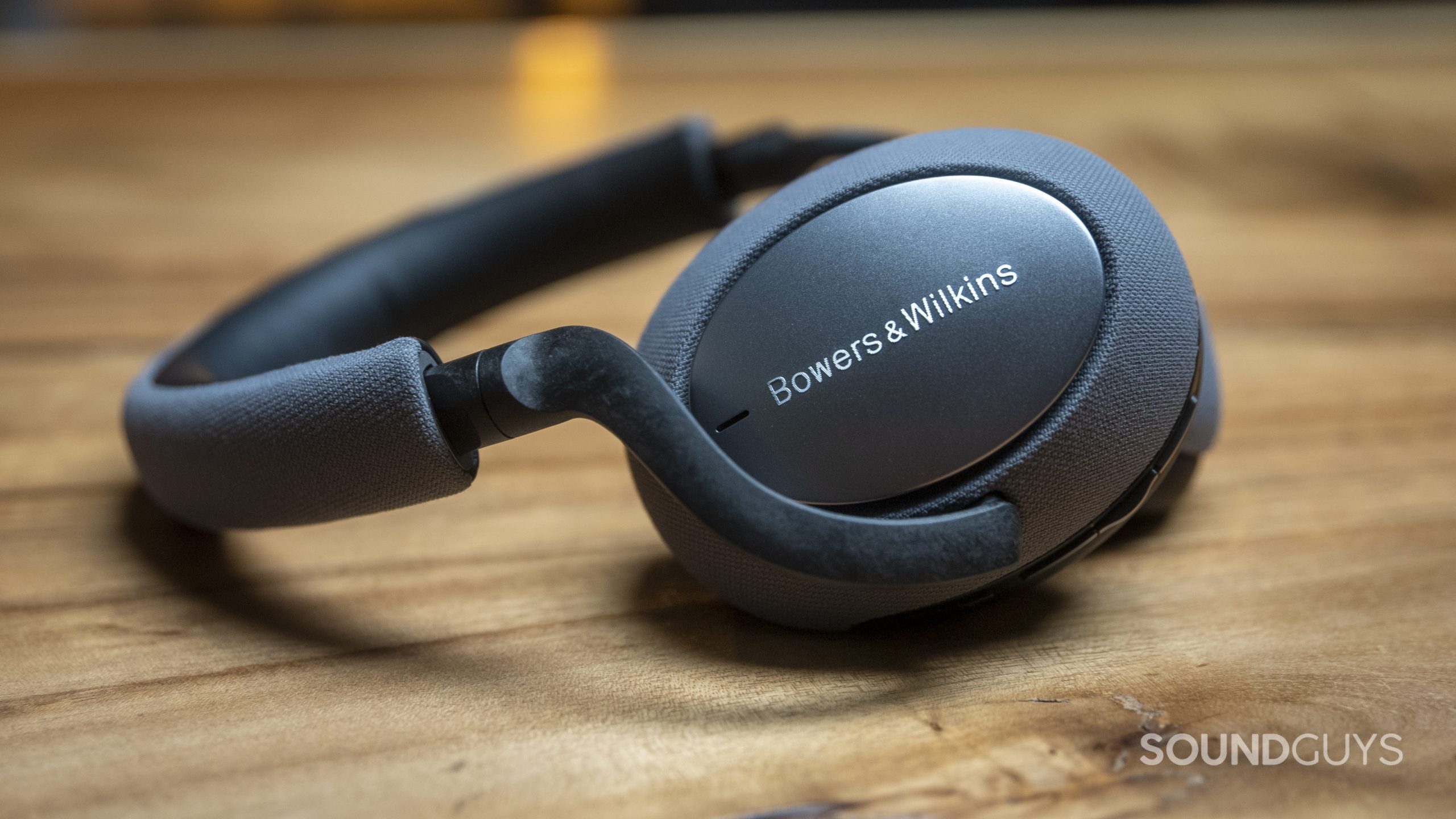
As this product is a couple of years old now, I wouldn’t be surprised to see it fall in price or go on sale. If the PX7 doesn’t ask for $400 USD, you may decide that the ANC is worth it at anywhere between $200-300 USD instead. However, that still puts it in the territory where it’s competing with Sony’s offerings, which are still a little more versatile and better-performing.
Really, the one area where these headphones make a name for themselves is aesthetics and little else. If that’s important to you, great! The PX7 is a fun option. However, it’s definitely not near the top of the pack in terms of performance, and that’s unlikely to change without serious updates to the firmware. After all, even Bose updated its QuietComfort 45 to address this inadequacy, so a set of headphones going for a long time without is more the exception than the norm. If that update happens, these would be much easier to recommend.
Even with our supplied equalizer preset, there’s only so much you can do to fix swings in emphasis that wide, so audiophiles will not want to tinker with this. Until we see big changes, save your money.
How do they compare to the Bowers & Wilkins PX7 S2e?
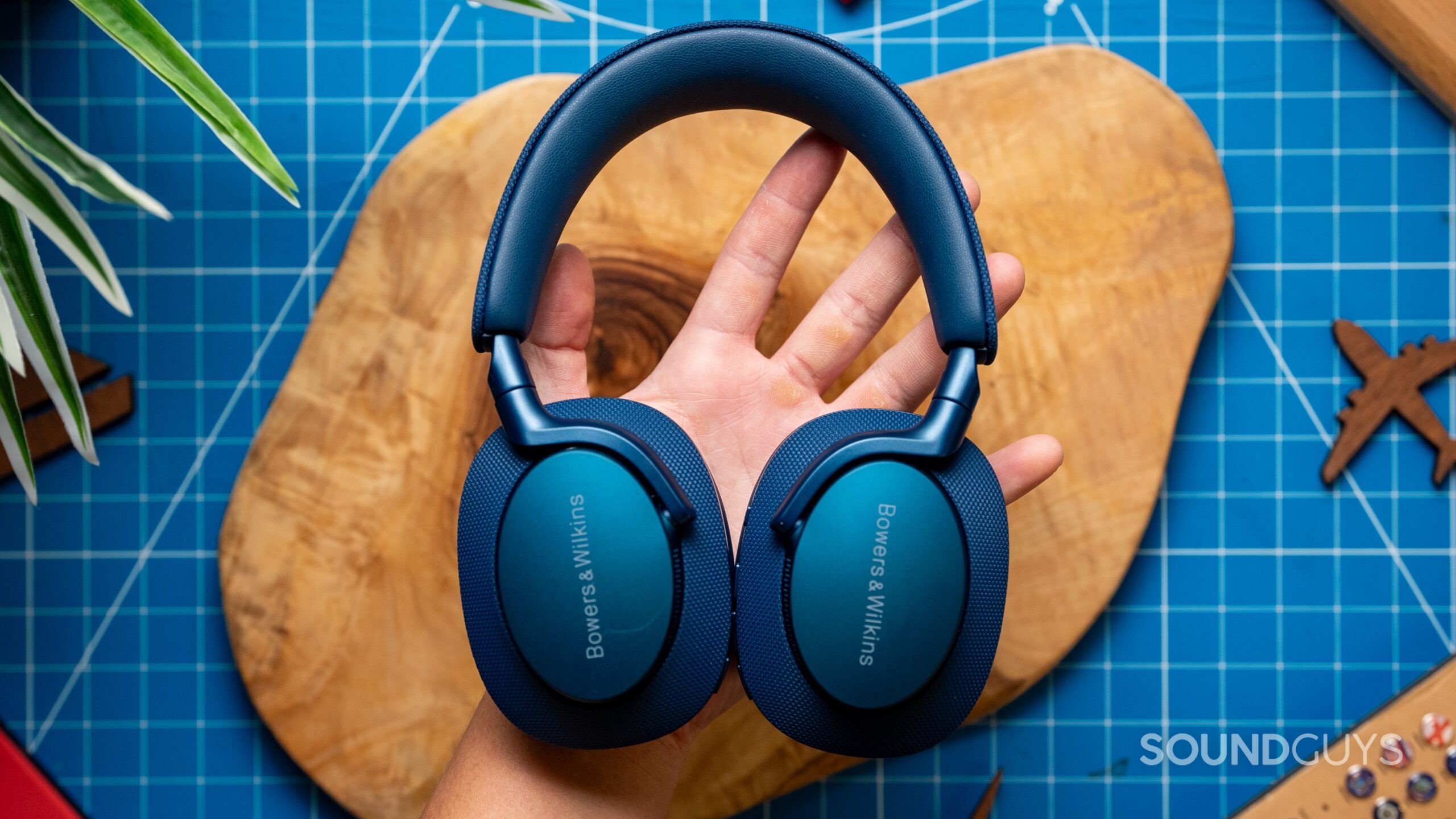
The Bowers & Wilkins PX7 S2e represents a significant evolution from its predecessor, the PX7. While both models showcase B&W’s commitment to premium build quality and aesthetics, the S2e addresses several key shortcomings of the original.
Sound quality is where the S2e truly shines compared to the PX7. The newer model boasts a well-tuned audio profile that lends weight and authority to music. In contrast, the PX7 suffered from a whacky default frequency response with overpowering bass and a lack of clarity.
Both headphones offer excellent ANC performance, but the S2e edges out its predecessor in battery life, clocking in at 41 hours compared to the PX7’s 33 hours (with ANC on). Comfort has also seen improvement, with the S2e featuring better weight distribution and a more accommodating fit — a welcome change from the PX7’s high clamping force that posed issues for glasses wearers.
While both models offer similar connectivity options and high-end codec support, the S2e’s overall package feels more refined and justifies its premium price tag. In essence, the PX7 S2e has taken the strong foundation laid by the PX7 and addressed its major pain points, resulting in a more competitive and satisfying pair of high-end ANC headphones.


What are alternatives to the Bowers & Wilkins S2e?
At the time of publishing, I’d say get any of the headphones from our best noise canceling headphones list. Really, all of them sound better than the Bowers & Wilkins PX7, and at prices that are a fraction of what these cans cost. I’m not usually comfortable panning headphones that are a little out of the mean, but these have very audible issues that are tough to ignore. The one shining performance point here is the ANC unit, but that really doesn’t justify the price when the Bose QuietComfort 45, Bose Noise Canceling Headphones 700, and Sony WH-1000XM4 can give you better sound and comparable ANC performance for less money up-front.
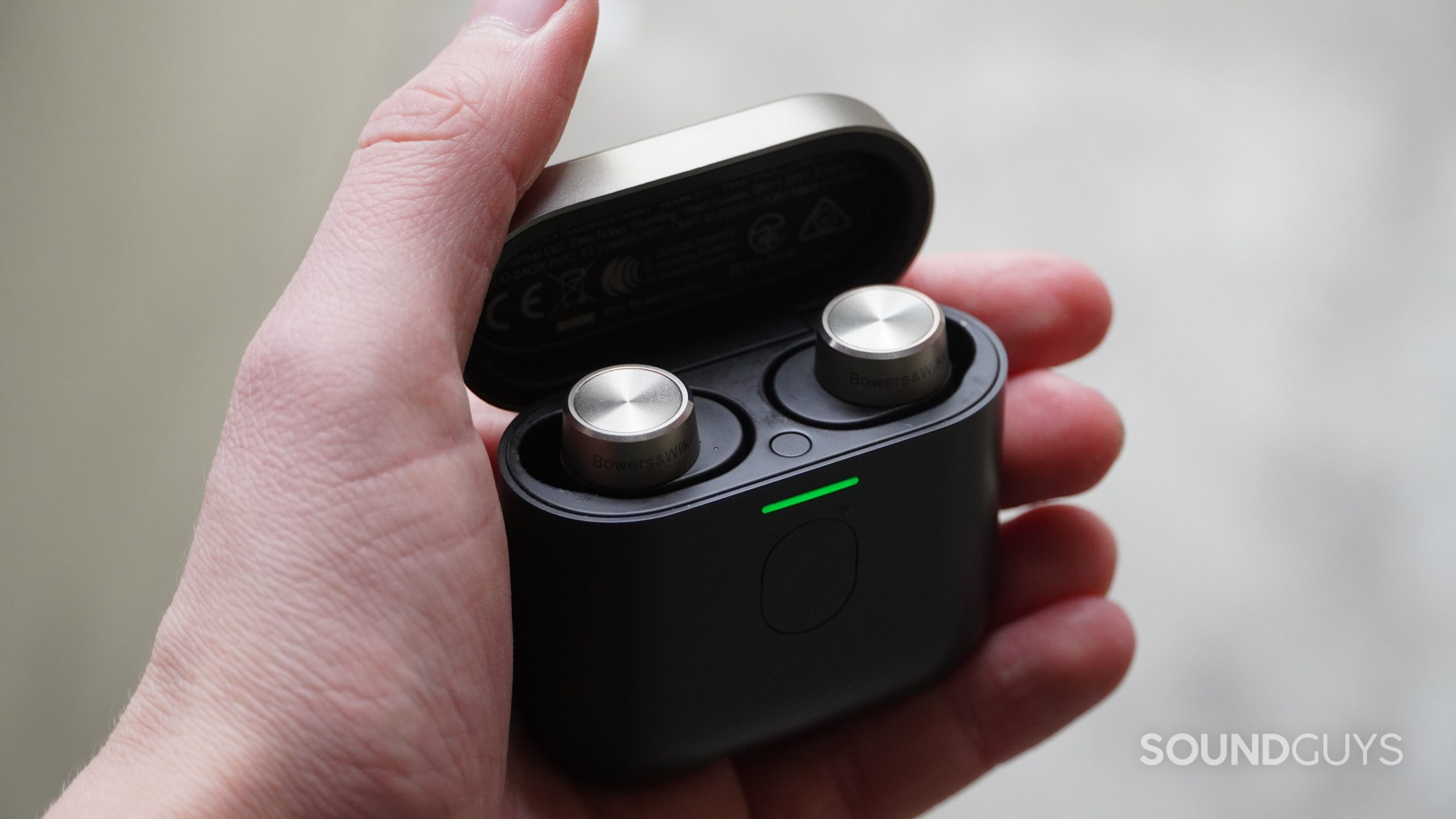
Listeners who love the look of Bowers & Wilkins’ headset but want something more portable may like the Bowers & Wilkins PI7. These are the company’s flagship wireless earbuds and have some pretty cool features, like an audio transmitter that works with any 3.5mm output, so you can use it with a plane’s entertainment system for wireless audio. The PI7 earbuds have an IP54 rating, making them pretty tough, too. The boosted bass response isn’t great, and the lack of EQ functionality in the app is even more disappointing. The noise canceling leaves a lot to be desired and really only affects a small frequency range.
Not too long ago, Bowers and Wilkins took the wraps off the PX8, a model of ANC headphones meant to leapfrog the PX7. We haven’t brought it into the lab quite yet, but it’ll have a lot to prove at $899.
Frequently asked questions about the Bowers & Wilkins PX7
No, the Bowers & Wilkins PX7 is not a set of waterproof headphones. The PX7 also does not carry an IP rating for water.